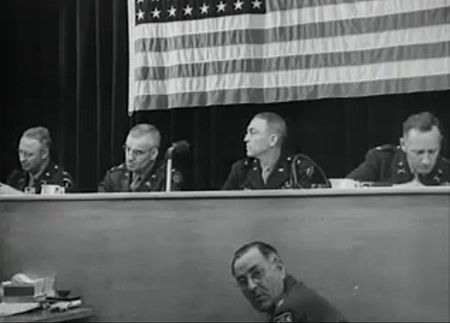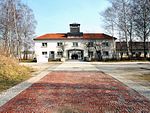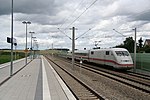Malmedy massacre trial
1940s in Bavaria1946 in case lawAftermath of World War II in GermanyJoseph McCarthyJuly 1946 events in Europe ... and 7 more
June 1946 events in EuropeMalmedyMassacres in BelgiumMay 1946 events in EuropeNazi war crimes trialsPages with login required references or sourcesTrials in Germany

The Malmedy massacre trial (U.S. vs. Valentin Bersin, et al.) was held in May–July 1946 in the former Dachau concentration camp to try the German Waffen-SS soldiers accused of the Malmedy massacre of 17 December 1944. The highest-ranking defendant was the former Waffen-SS general Sepp Dietrich.
Excerpt from the Wikipedia article Malmedy massacre trial (License: CC BY-SA 3.0, Authors, Images).Malmedy massacre trial
Camp Road,
Geographical coordinates (GPS) Address Website Nearby Places Show on map
Geographical coordinates (GPS)
| Latitude | Longitude |
|---|---|
| N 48.270277777778 ° | E 11.468055555556 ° |
Address
KZ-Gedenkstätte Dachau
Camp Road
85221
Bavaria, Germany
Open on Google Maps











